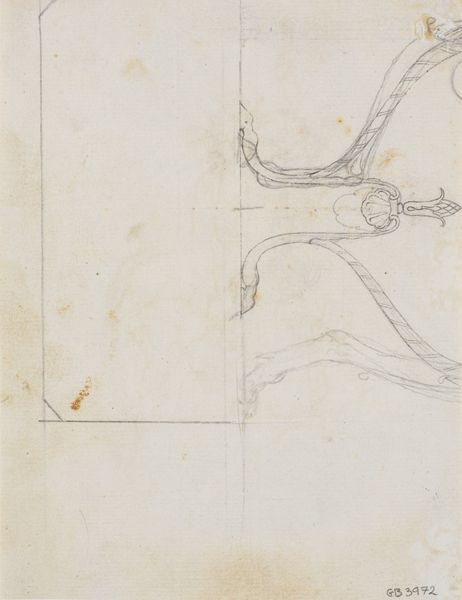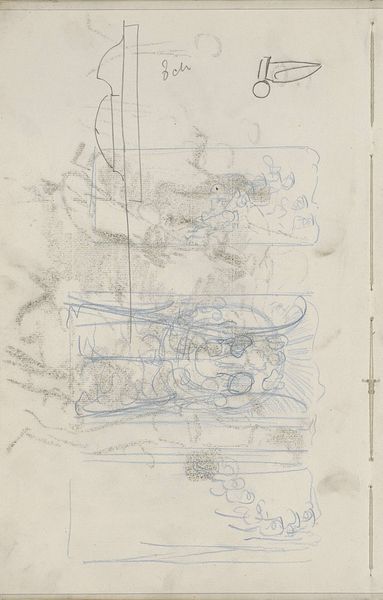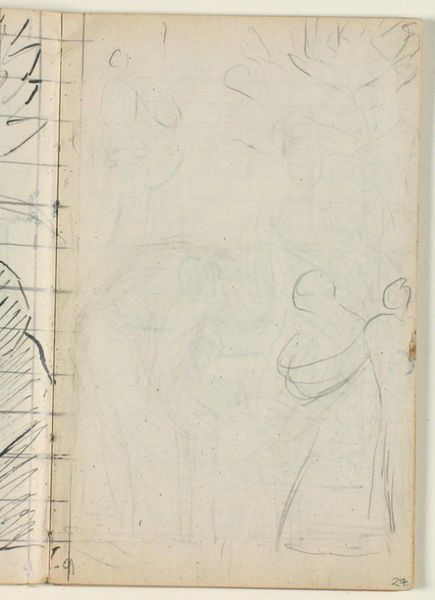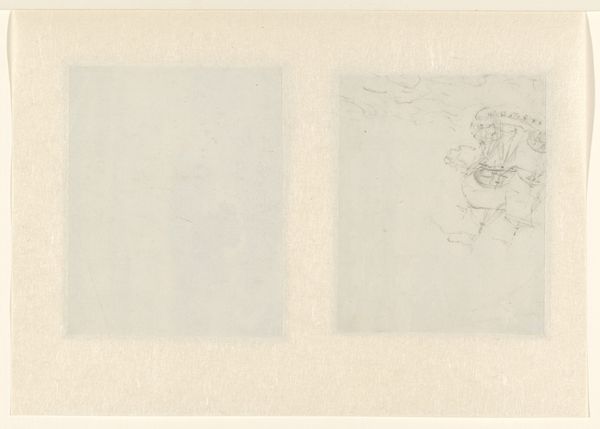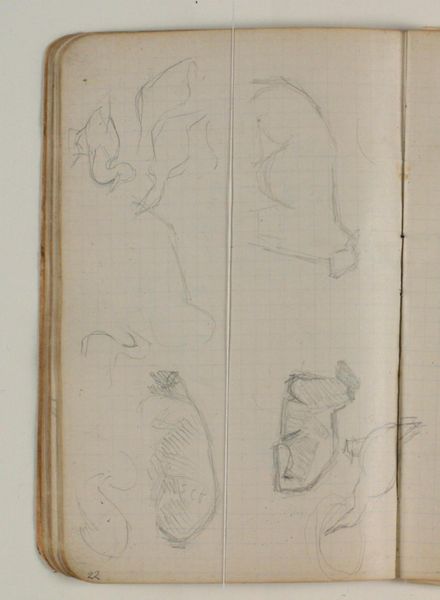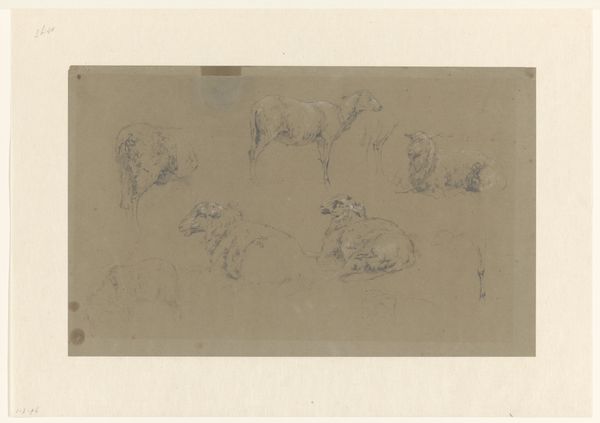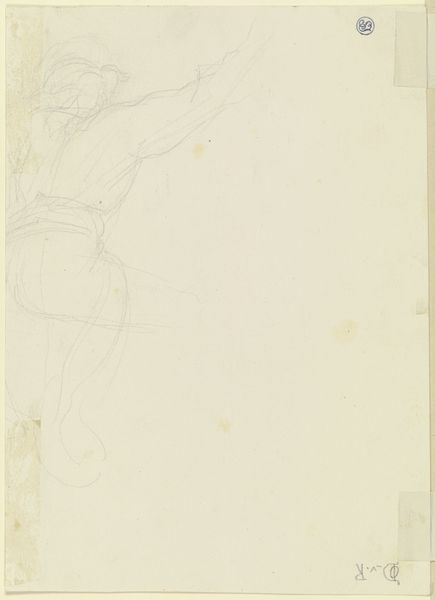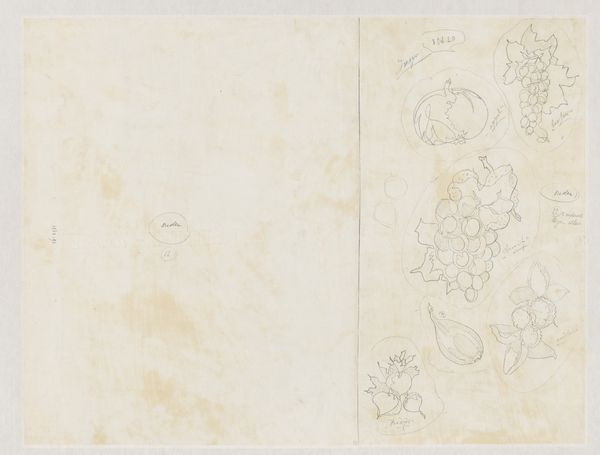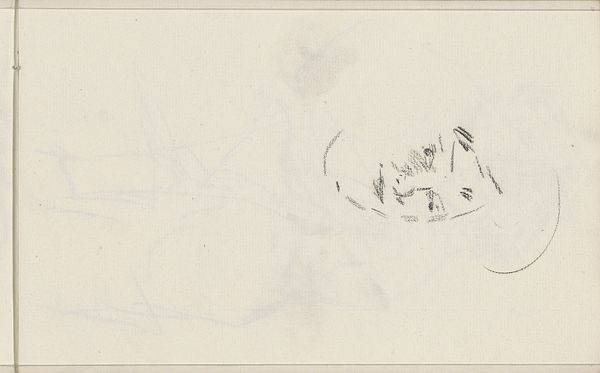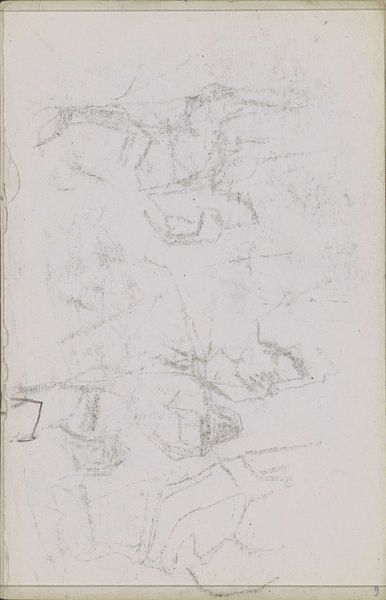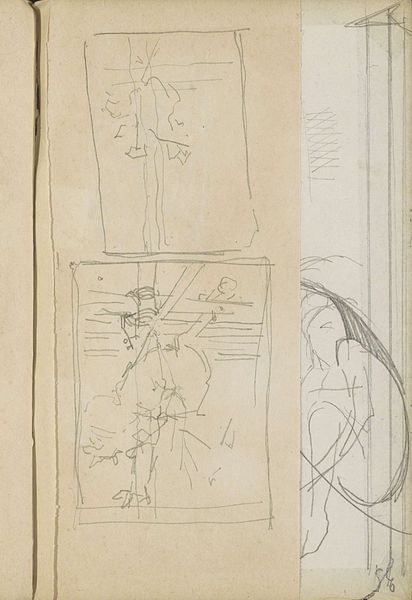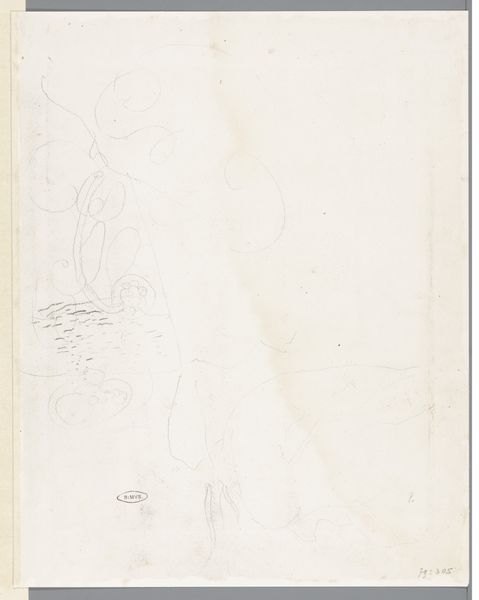
drawing, paper, pencil, chalk
#
portrait
#
drawing
#
16_19th-century
#
german-expressionism
#
paper
#
german
#
pencil
#
chalk
Copyright: Public Domain
Curator: Let's turn our attention to this drawing, "Personen um einen Tisch versammelt," housed here at the Städel Museum. Though we don't have a precise date for its creation, it’s clear from the style and medium, pencil and chalk on paper, that it belongs to the period that saw the rise of German Expressionism. Editor: Whoa, that is faint! At first glance, it’s like catching a whisper of a memory, a fragile sketch that might fade away if you look at it too directly. Curator: It does present itself with a certain humility. Considering it, I think about the circles of power and influence that shaped early 20th-century art. Who were these people gathered around the table? What social dynamics are at play? Is this a revolutionary meeting or an artistic discussion, perhaps reflecting a shift towards greater artistic self-awareness, or a resistance movement, given the historical context? Editor: I love the feeling of incompleteness. Like we’re glimpsing the ghost of an idea rather than a fully formed masterpiece. You know, when you consider its raw expressive form and the use of a somewhat tentative medium, the starkness feels intentional. What do you make of the table as a central figure, both uniting and dividing those pictured? Curator: It's an interesting question of division and unity. The table becomes this contested space, a site of potential conflict and perhaps negotiation. Think about the politics inherent in any gathering. Who gets a seat at the table? Who is heard? The unfinished quality feels fitting given the rapid socio-political changes taking place in Europe at the time. It asks the viewer to become a participant in that unravelling or revealing of history. Editor: Okay, that's powerful. I was stuck on seeing the fragility. Now, I also see the unfinished nature also gives us room to bring our own feelings to the scene, as though you were somehow there as this ghostly witness. I imagine myself pulling up a chair, not even sure of how welcome I'd be. Curator: That sense of inclusion is important; I hope it inspires a dialogue not only with the past but with ourselves in the present, regarding the many voices still striving for recognition in cultural and political spheres. Editor: I see it now. Like the artwork itself, our conversation feels unfinished, like we’re at the beginning of truly unraveling something compelling.
Comments
No comments
Be the first to comment and join the conversation on the ultimate creative platform.
